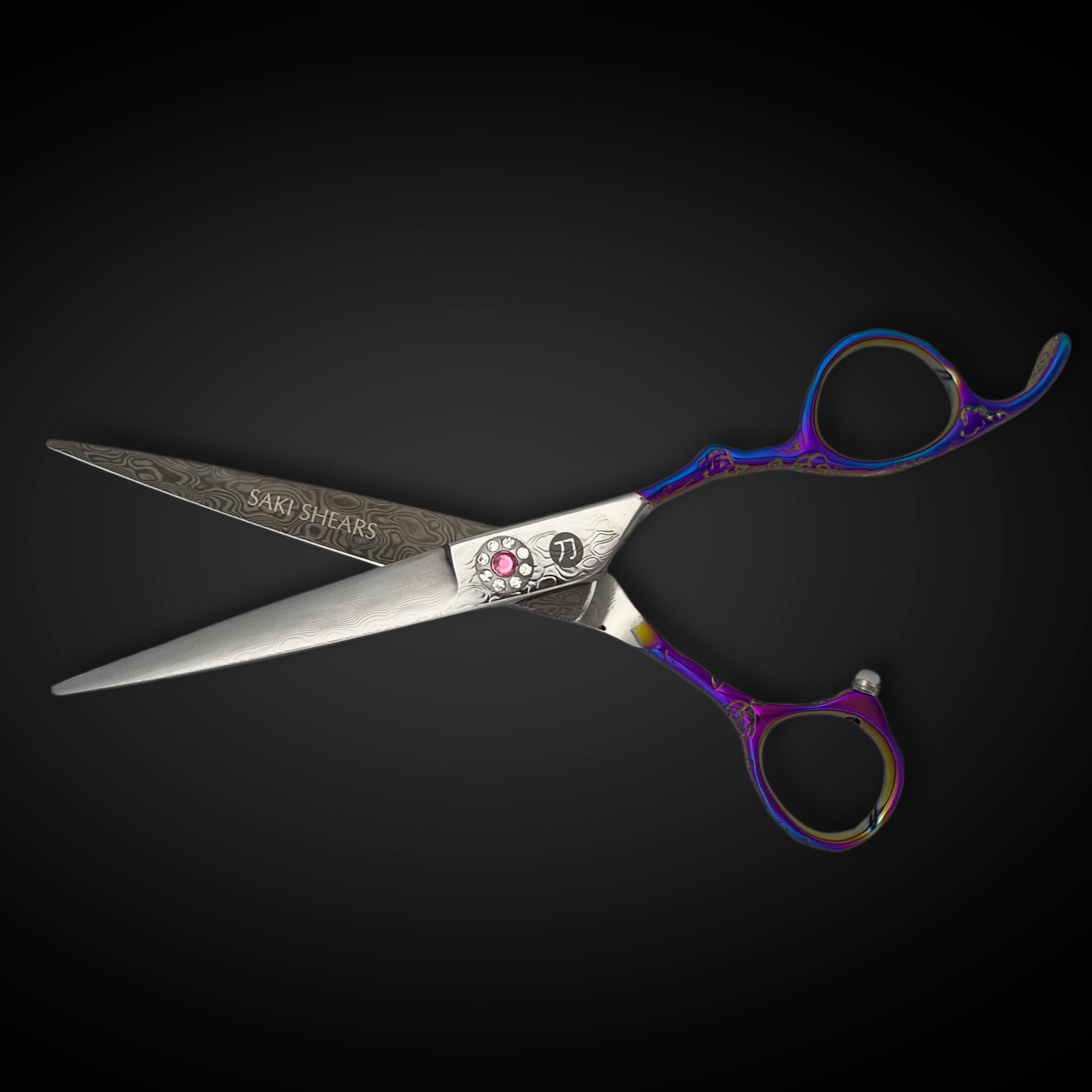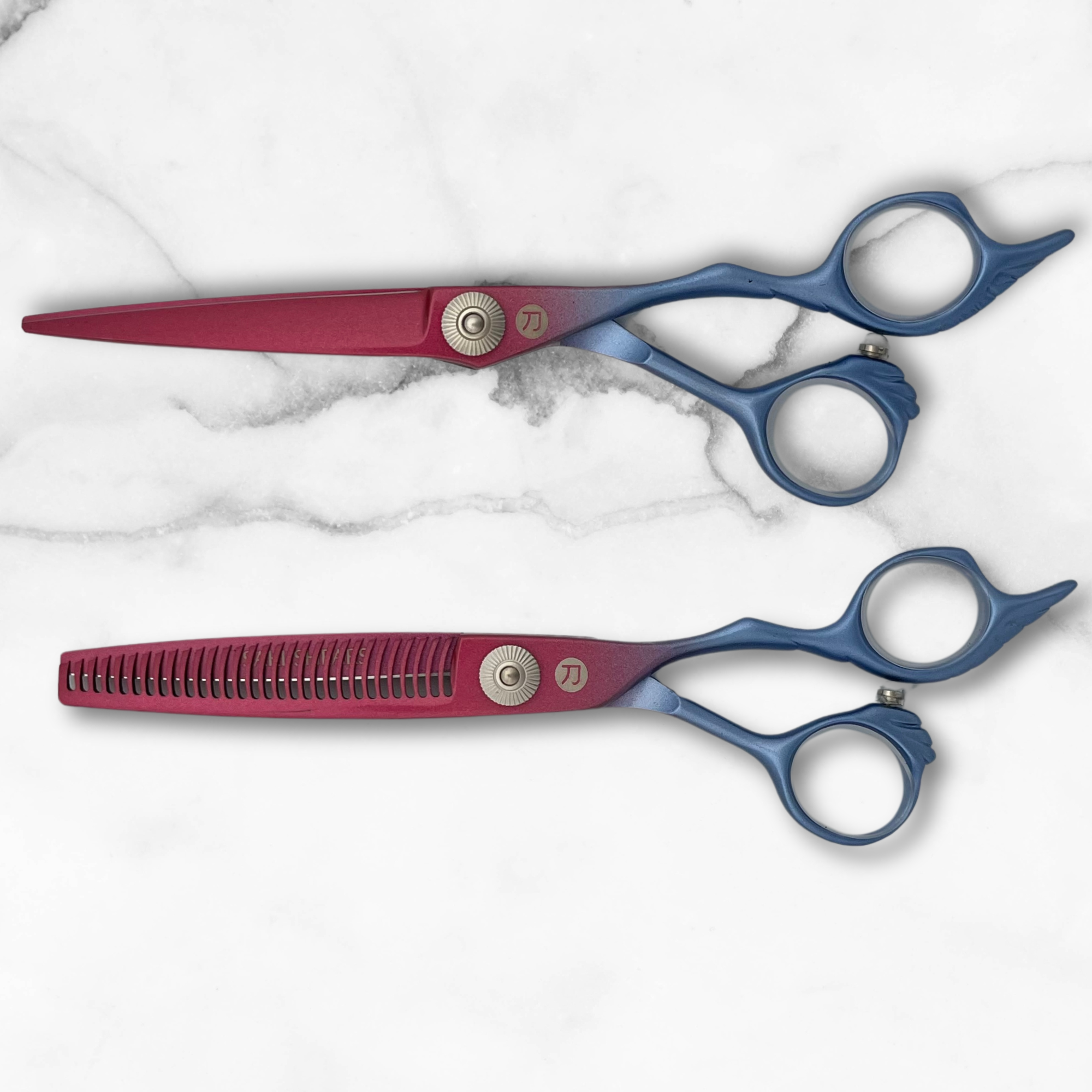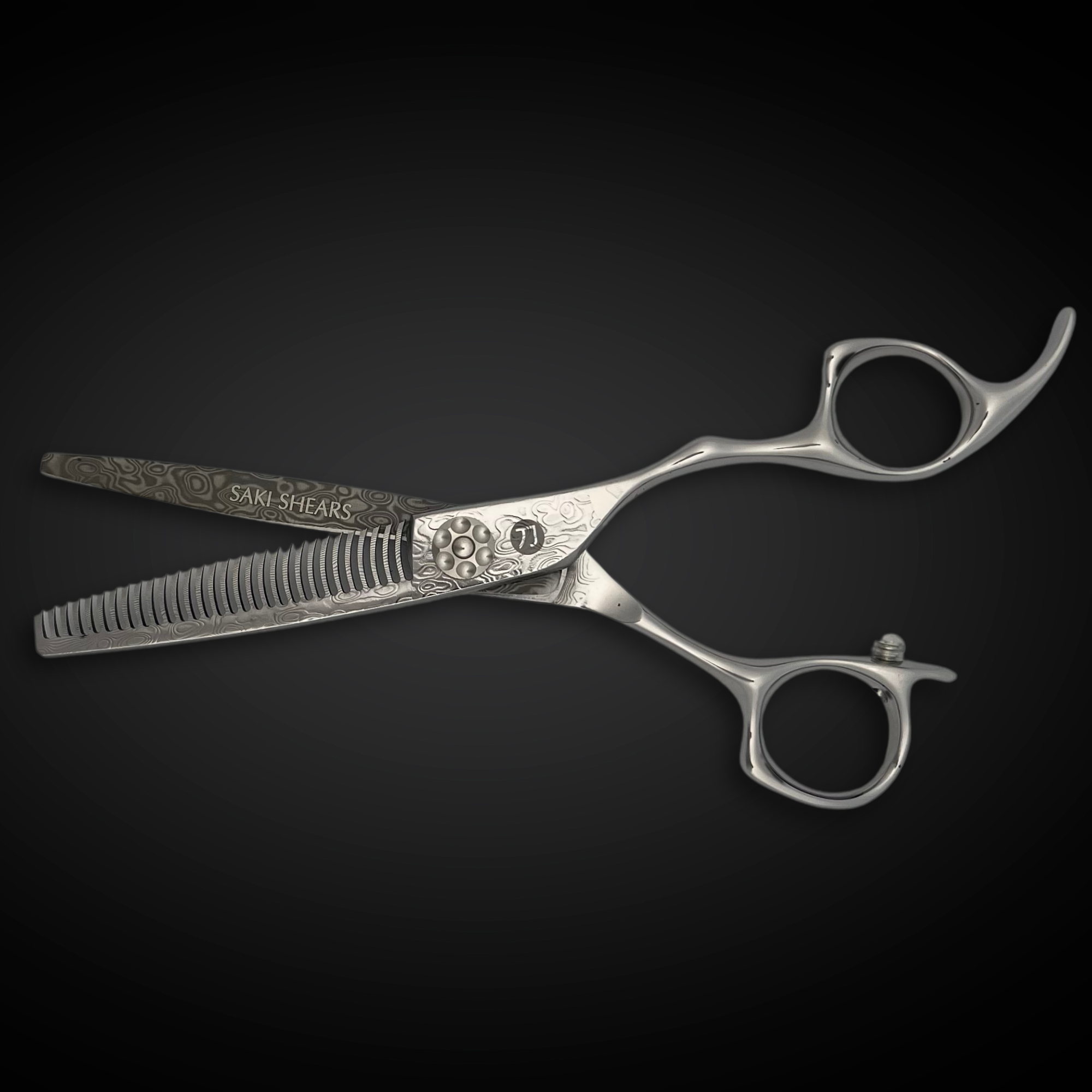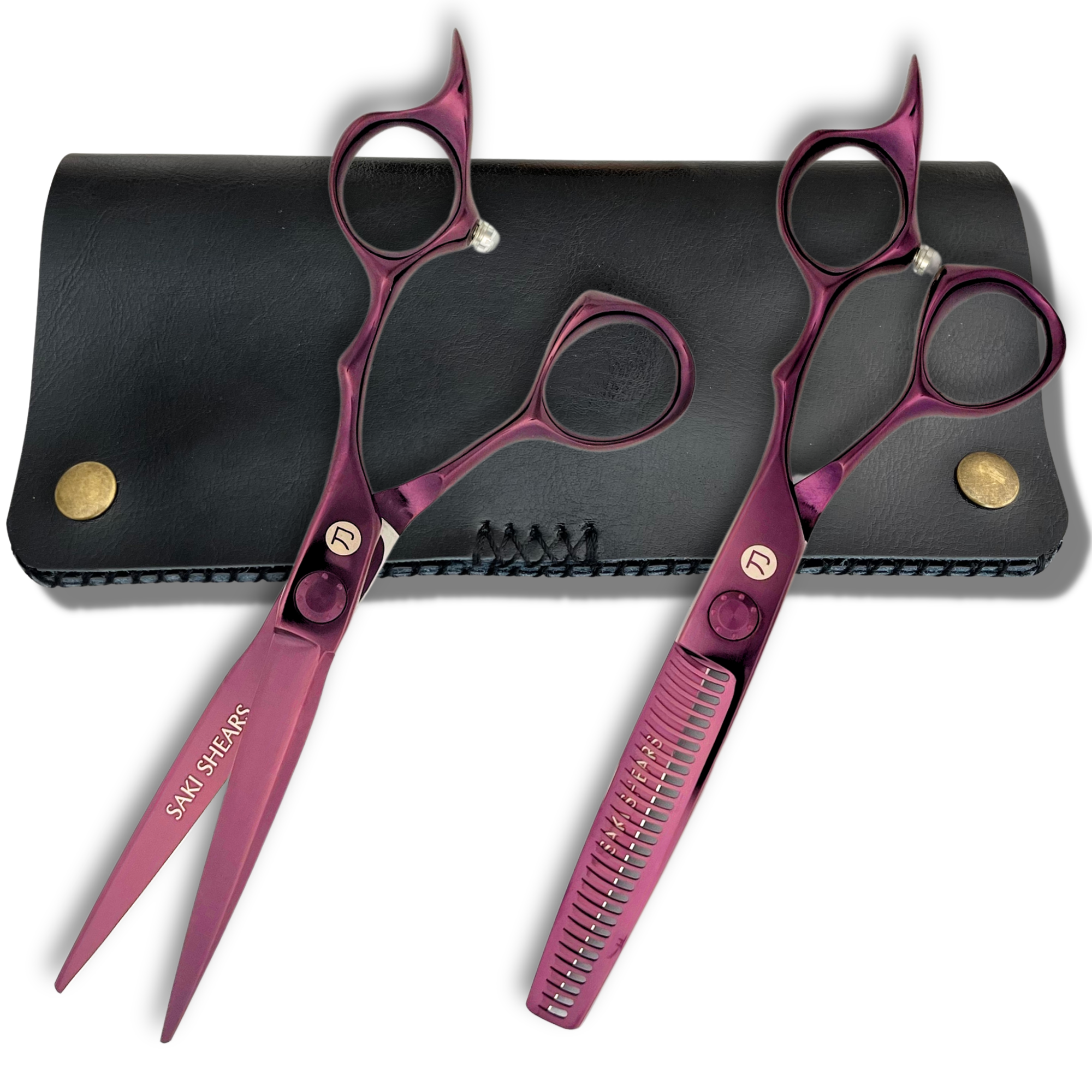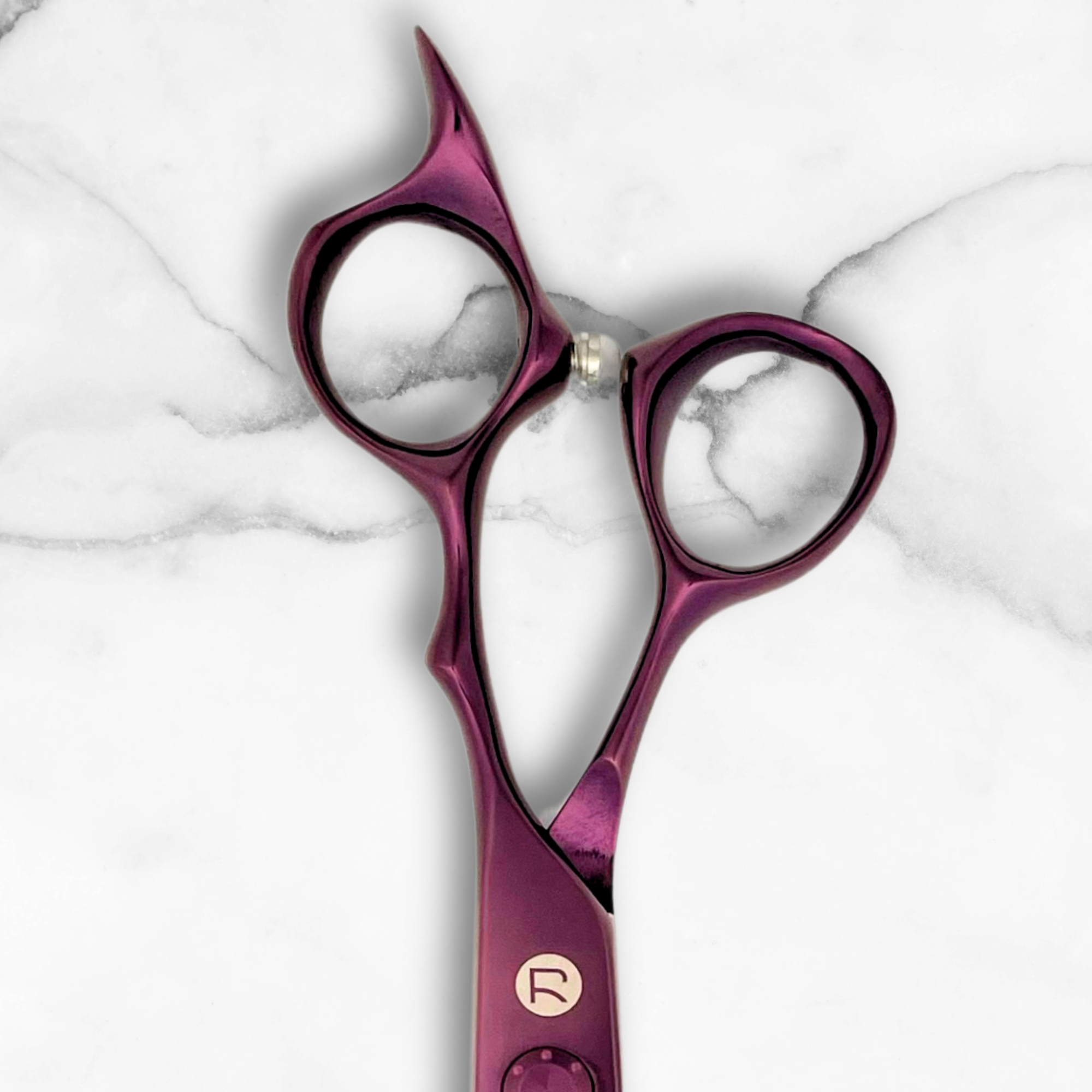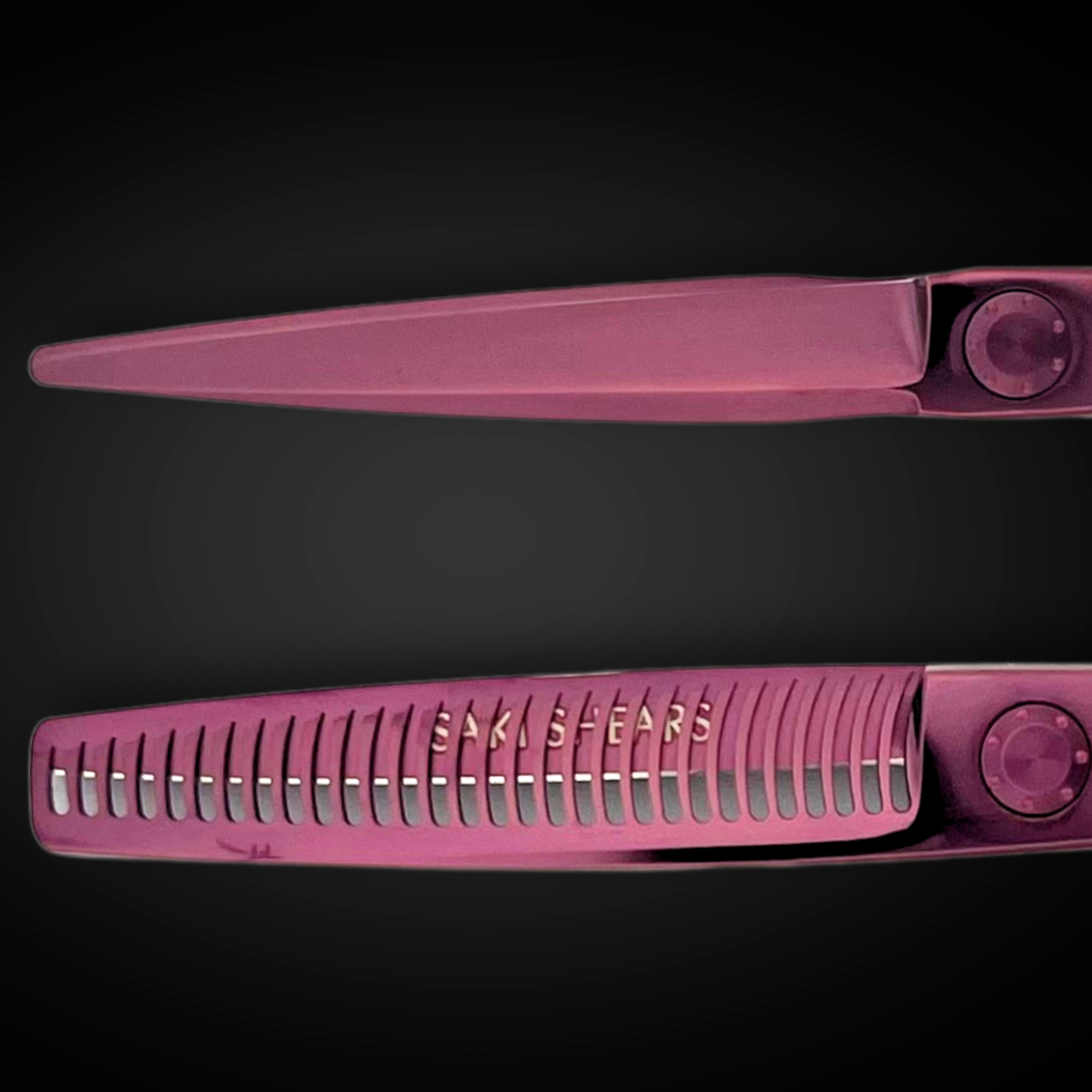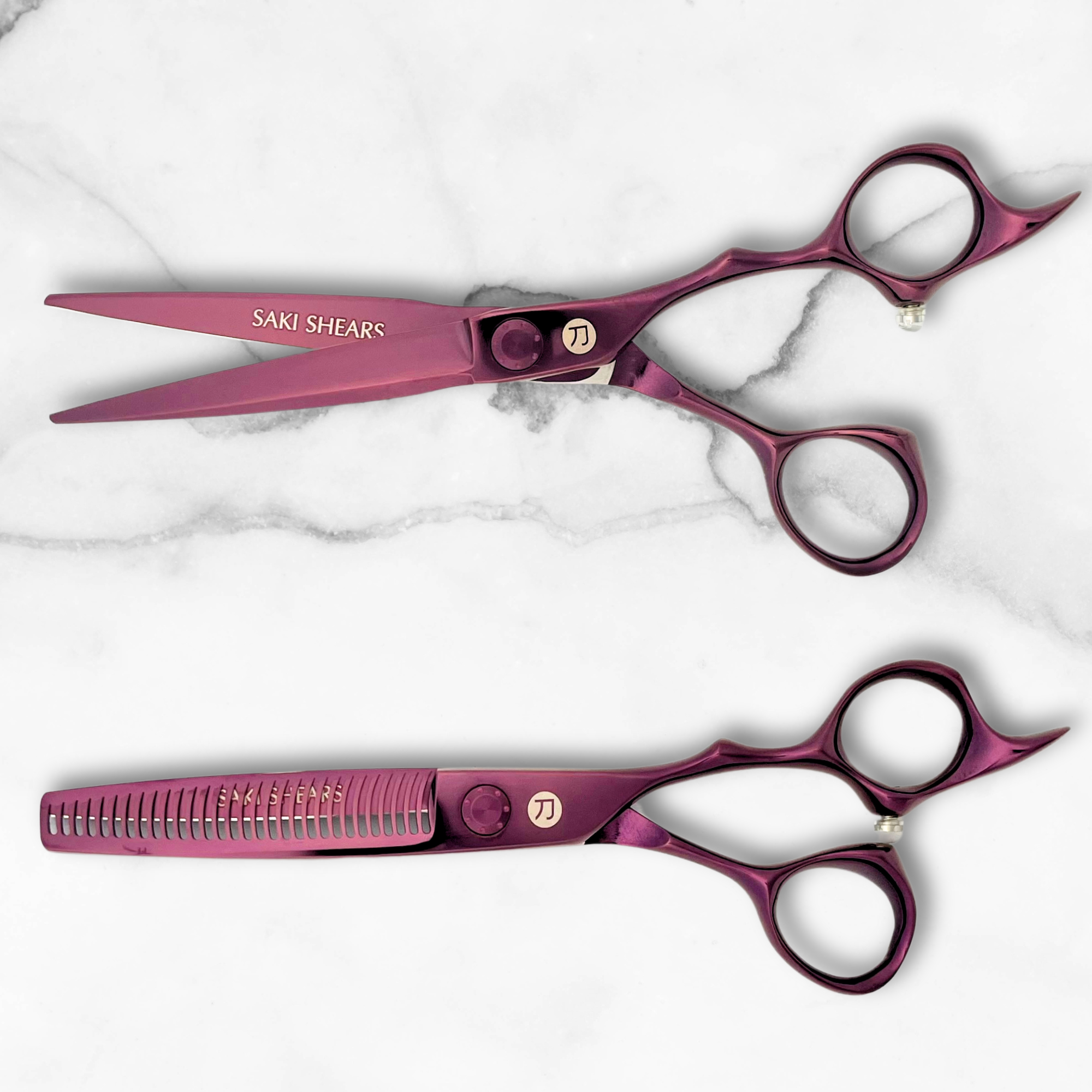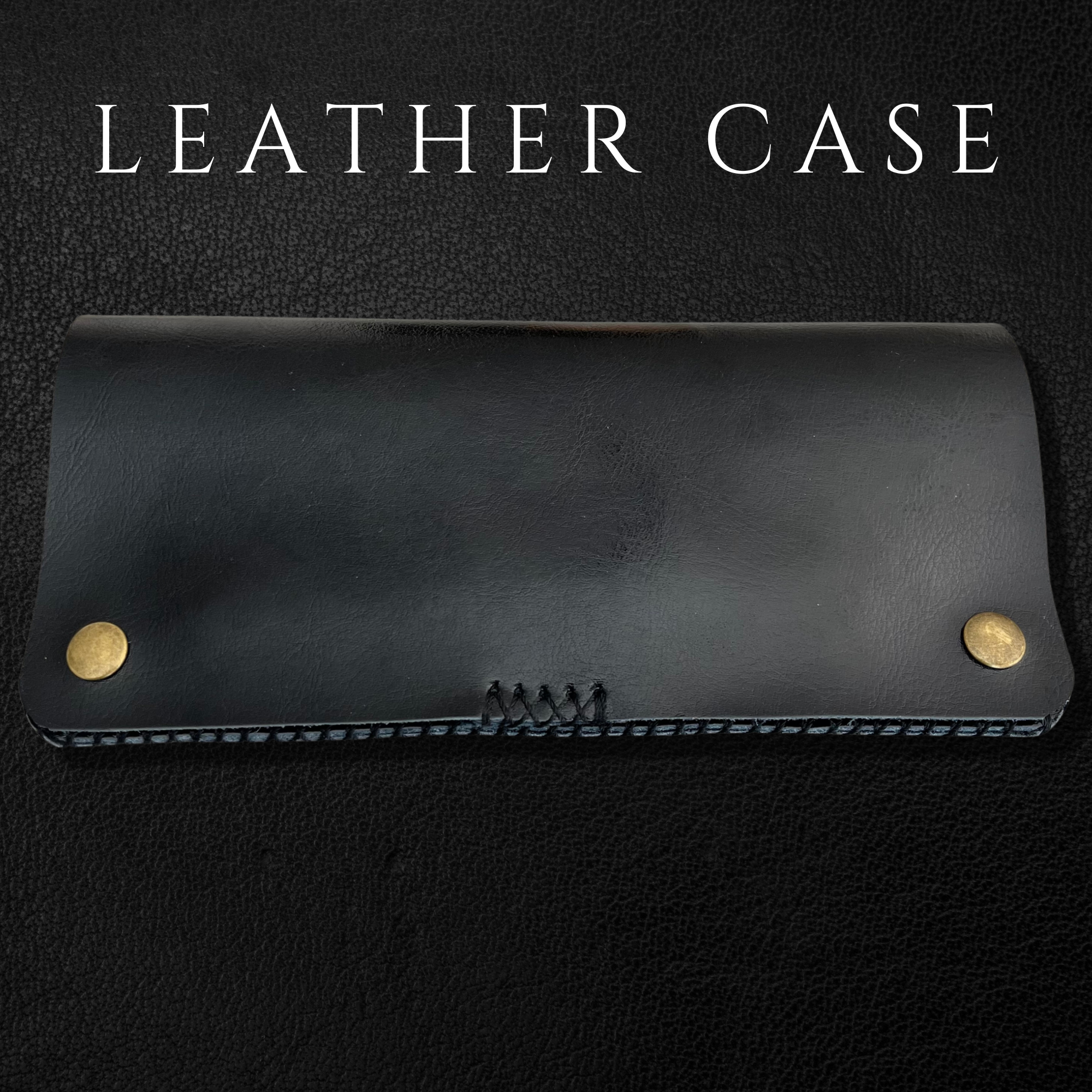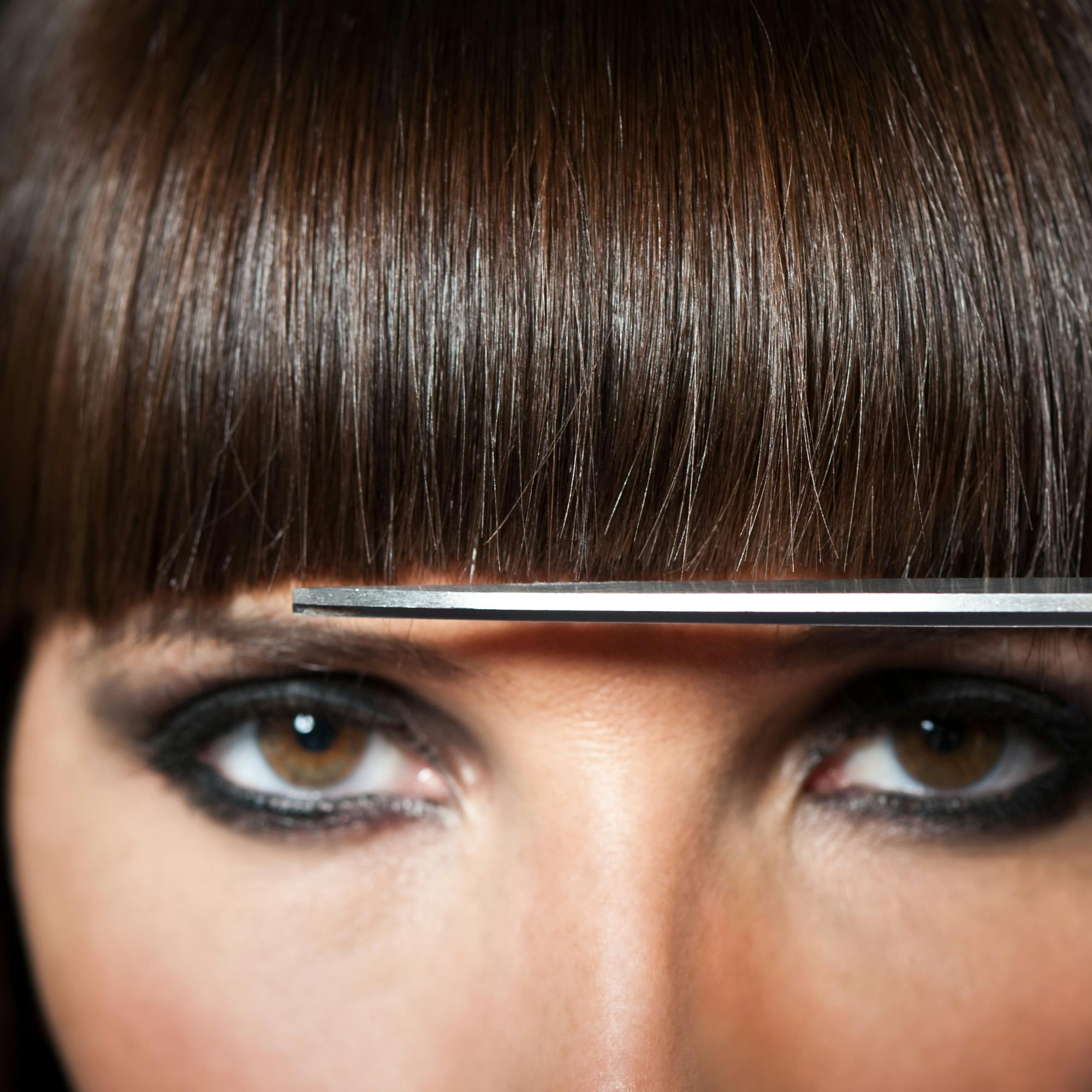This Year’s Most Popular Hairstyles for Women: A Stylist’s Guide to the Perfect Shears for Each Look
In 2024, women's hairstyles focus on blending timeless classics with modern flair. Layered cuts dominate with 27% popularity, followed by bob cuts (16%) and pixie cuts (14%). Achieving these styles requires the right tools and techniques, such as precision shears for sharp lines, texturizing shears for texture, and razors for detailed finishes.
Key Takeaways:
- Layered Cuts: Use adjustable-tension shears for natural movement and volume.
- Bob Cuts: Precision shears ensure clean lines and sharp edges.
- Pixie Cuts: Texturizing tools add definition and variety.
Investing in high-quality tools, like Japanese steel shears and ergonomic designs, ensures comfort and precision. Proper maintenance, such as regular sharpening and cleaning, keeps these tools in top condition for flawless results. Keep reading to learn more about the techniques and tools shaping 2024's hairstyling trends.
Popular Hairstyles and Cutting Techniques
Layered Cuts
Creating flawless layers calls for techniques like point cutting and slicing to add natural movement and volume. To achieve this, stylists should use adjustable-tension shears, which allow for controlled cutting angles. Hair is typically sectioned at 45-degree angles to ensure even layering. Point cutting at the ends helps soften the texture and avoids harsh lines.
Bob Cuts
Bob cuts account for 16% of popular hairstyles in 2024 [1]. Modern bobs emphasize clean lines and sharp edges, requiring precision and attention to detail. Key techniques include:
- Using sharp, high-quality shears for consistent cutting angles
- Applying the scissor-over-comb method for a perfectly shaped neckline
- Adjusting techniques to suit different hair textures and densities
Pixie Cuts
Pixie cuts, favored by 14% of women [1], demand precise tool handling with texturizing shears or razors. These short styles benefit from ergonomic tools that reduce hand fatigue while enabling detailed work. Texturizing shears with offset handles are especially useful, as they enhance control and allow for better angular positioning, creating varied lengths and textures throughout the cut.
Each style requires the right tools and techniques to achieve professional results:
- Layered cuts: Adjustable-tension shears for point cutting and slicing
- Bobs: Precision shears for clean lines and scissor-over-comb work
- Pixie cuts: Texturizing shears or razors for added texture and definition
Mastering these tools and techniques is key to meeting client expectations and delivering polished, precise hairstyles. Next, we'll dive into the specific features that make these tools ideal for their respective styles.
How to Use Thinning Shears: Professional Guide
Tools for Precision Cutting
For professional hairstylists, having dependable tools is key to delivering consistent, high-quality results. The right equipment can make all the difference when it comes to achieving today's most in-demand styles.
Haircutting Shears
Haircutting shears are the cornerstone of any stylist's toolkit. Shears made from premium steel are known for their durability, resistance to rust, and ability to deliver precise cuts. Prices typically range from $125 to over $285, depending on the materials and features. Many professional shears come with adjustable tension systems, allowing stylists to fine-tune the cutting experience. This is especially useful for creating sharp bob lines or precise layered cuts.
Thinning and Texturizing Shears
Thinning and texturizing shears are designed to add texture and reduce bulk with ease. Models with titanium coatings are popular for their durability and smooth performance. With ergonomic handles and 28-32 teeth, these shears help reduce wrist strain while allowing stylists to craft textured pixie cuts or modern, layered looks.
Razors and Combs
Fine-toothed combs and high-quality razors are essential for precision work. Durable combs make sectioning hair easier, while razors are perfect for adding detailed texture. Professional razors are priced between $20 and $100, while sectioning combs typically cost $20 to $50. To keep these tools in top condition, regular cleaning, lubrication, and proper storage are a must.
Investing in well-made, professional-grade tools ensures consistent performance and helps stylists create the polished hairstyles clients expect. With the right tools in hand, the next step is learning how to choose the perfect shears for your specific needs.
Choosing the Right Shears
The tools you use can greatly influence how well you execute trending hairstyles with precision and ease.
Key Features to Look For
When selecting shears, focus on blade quality, ergonomic design, and durability. Blades made from high-grade Japanese steel, such as 440C or VG-10, offer sharpness ideal for creating clean layers and sharp lines in modern styles.
Ergonomic handles, especially offset designs, help reduce wrist strain during long styling sessions while maintaining precision. Shears should feel well-balanced - light enough for control but heavy enough to minimize fatigue.
| Feature | Benefit |
|---|---|
| Sharp Blades (440C/VG-10) | Precise cuts for layers and bobs |
| Ergonomic Handles | Less wrist strain during extended use |
| Adjustable Tension | Fine-tuned control for detailed styling |
Recommended Brands and Products
Saki Shears is a standout choice among professionals, offering a range of high-quality cutting tools. Their 6-inch curved shears, priced at $185, are ideal for creating smooth layers and sharp bobs. Known for their ergonomic designs and premium steel, these shears meet the demands of 2024's most popular styles. For textured cuts, their titanium-coated texturizing shears provide durability and excellent performance.
"The right shears can make all the difference in the quality of your cuts and the comfort of your work." - Eric Michael, hairstylist and educator [1]
Maintaining Your Shears
Daily cleaning with a soft cloth and mild soap removes hair and product buildup. Schedule professional sharpening every 6-12 months depending on usage. Always store your shears in a protective case to avoid damage and misalignment, and oil the pivot weekly to keep them operating smoothly and prevent rust.
Smooth operation is key - if your shears start snagging, it’s time to sharpen them. Proper maintenance ensures consistent performance, allowing you to deliver flawless cuts that meet your clients’ expectations every time.
Conclusion
The hairstyling industry in 2024 highlights the strong link between advanced cutting techniques and the use of professional tools. Modern hairstyling thrives on mastering key skills while working with tools designed for precision and ease of use.
High-quality shears are at the heart of great styling. Made with premium materials and ergonomic designs, they help stylists achieve clean lines, smooth layers, and sharp edges with consistency. Choosing the right tools not only boosts efficiency but also ensures client satisfaction.
Classic styles with a modern twist remain popular, making a well-rounded toolkit essential. From standard cutting shears to specialized texturing tools, each item plays a role in creating polished results. Regular maintenance of these tools is crucial to maintain their performance and extend their lifespan.
Combining professional-grade tools with technical expertise enables stylists to handle a variety of styles while staying comfortable and precise throughout their workday. The right equipment enhances the quality of cuts and supports long-term success and client loyalty.
As hairstyling continues to merge timeless techniques with current trends [2], focusing on skill development and maintaining top-tier tools ensures stylists can stay ahead. This approach allows them to deliver results that not only meet but often surpass client expectations.
Precision, creativity, and consistent quality form the foundation of success in hairstyling. With these elements in place, stylists can build a thriving career while meeting the demands of a diverse and ever-evolving clientele.
FAQs
When cutting layers, which cutting position should be used?
The cutting position for layers depends on the hair's texture, length, and the desired style. Stylists often work at angles between 135° and 180° for layers that flow naturally while keeping the hair's natural fall intact. For precise face-framing sections, a 90° angle is ideal.
Here are a few things to keep in mind when cutting layers:
- Angle Choice: Higher angles (135°–180°) create soft, flowing layers, while a 90° angle is better for framing the face.
- Volume Management: Layers help reduce weight, making it easier to style hair with added volume.
- Cutting Technique: Dry cutting is great for seeing how the hair naturally moves and for refining details.
| Style Type | Recommended Angle | Purpose |
|---|---|---|
| Long Layers | 135° - 180° | Reduces weight and adds movement |
| Face-Framing | 90° | Defines and highlights facial features |
Pairing the right cutting angles with professional tools, like texturizing shears, ensures accurate and polished results. This method allows stylists to craft styles that complement the hair's natural texture while maintaining its shape and structure.

